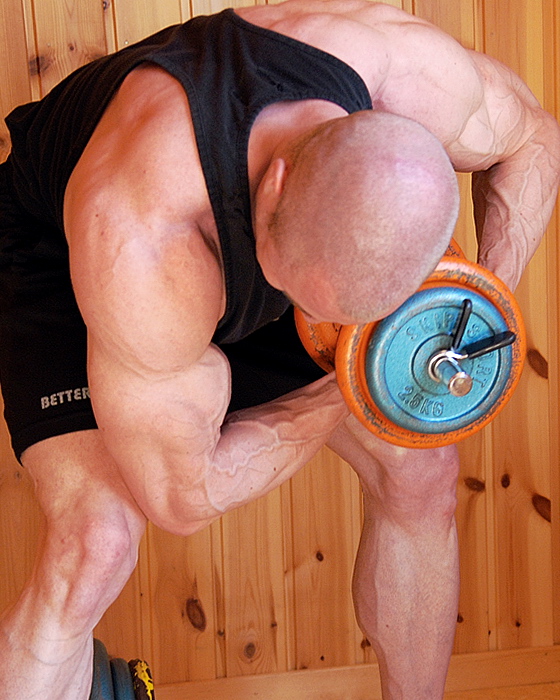Written by Joachim Bartoll, February 15, 2016
Classic Muscle Newsletter, February 2016 (issue #17)
The concept of continuous muscle tension is quite old. We wrote about keeping a muscle under constant load/tension in our old internet magazine Ironmag Online in the late 90’s, and I’ve covered it from time to time on various discussion boards. The subject of tension and muscle failure usually comes up after some “know-it-all” has watched a video of a pro bodybuilder and complained about the lack of “full range of movement”.
It’s actually quite simple. If you lock out a movement, you lose quite a lot of muscle tension, since the load shifts to be supported by the joint and bones, instead of the muscle belly. The opposite is true when you stop just short of the top (lockout) and bottom of an exercise. This will make sure that the muscle is fully loaded (continuous tension), working against the resistance during every repetition. For this to work optimally, you also need to be minimizing momentum, as excessive momentum can cause deceleration at the top of a movement, and thereby decreasing muscle tension.
For obvious reasons, this kind of muscle tension work is best suited for isolation exercises. In other words, muscle tension techniques should be a compliment to your heavy and explosive lifting and therefore placed at the end of a workout.
For compound multi-joint exercises and heavy lifting, I prefer a short stop just short of lockout followed by a very quick turn-around at the bottom of a repetition. When lifting heavy, the focus is on perfect repetitions of maximum force and explosiveness – not on continuous muscle tension.
Fortunately, there’s some research that supports that lifting with continuous tension can provide a potent stimulus for muscular hypertrophy, even when relatively light loads are used (Tanimoto et al., 2008). This further supports the idea of implementing continuous muscle tension by the use of isolation exercises at the end of a workout, preferable with a longer TUT (time under tension).
This kind of training also seem to work even better for the chemically enhanced, which probably is the reason why you see so many pro bodybuilders focusing on these continuous piston-like reps.
As I wrote in my latest book, The Maximum Muscle Guide 2016 Volume 1, repetitive muscular contractions without rest, cause a compression of blood vessels, restricting both inflow and outflow of blood and oxygen during exercise, creating a hypoxic intramuscular environment. In other words, self-inflicted occlusion training. There’s evidence that the hypoxic effect mediates a hypertrophic response from by the buildup of metabolites, the reduction in pH levels, and the increase of hormones from such training.
Another excellent training technique suited for less neurological draining isolation exercises are training to positive muscular failure. To keep your training session as short as possible and avoiding unnecessary garbage sets and exercises, combining continuous tension with training to failure is a very powerful muscle building technique. And best of all, only two to three sets are needed.
If you’re more advanced, you can use high repetition rest-pause sets or drop sets to failure and with continuous muscle tension. A lot of my training programs from the last 15 years has utilized these techniques.
Also keep in mind that muscle tension sets are about muscle contractions. That is more than simply moving the load of resistance in a fluid motion – it’s also about really flexing and squeezing the working muscle during every inch of every repetition.
Give it a try as a finisher in your workouts and you might be surprised at the new spurt of muscle growth!
